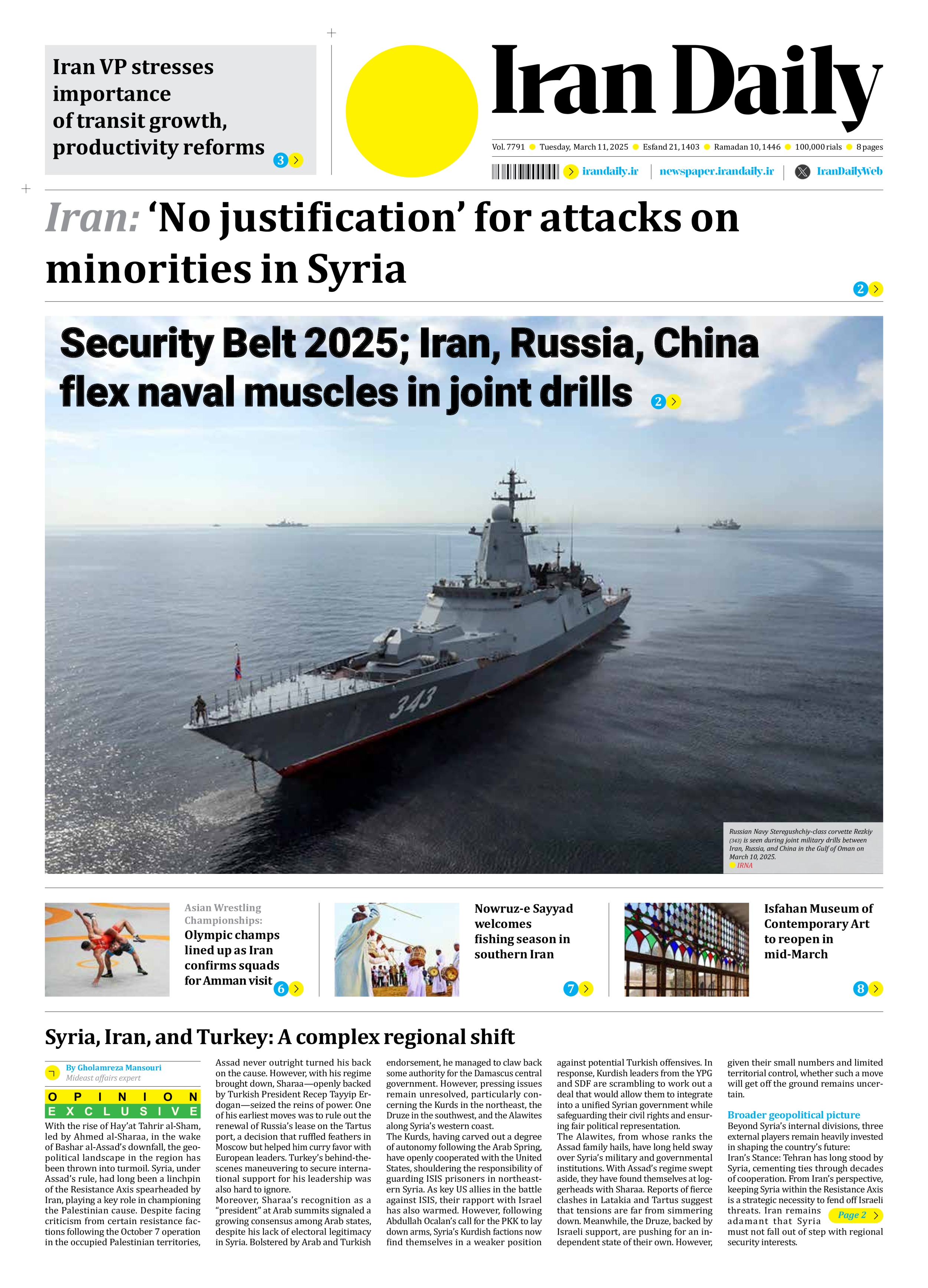
Syria, Iran, and Turkey: A complex regional shift
By Gholamreza Mansouri
Mideast affairs expert
With the rise of Hay’at Tahrir al-Sham, led by Ahmed al-Sharaa, in the wake of Bashar al-Assad’s downfall, the geopolitical landscape in the region has been thrown into turmoil. Syria, under Assad’s rule, had long been a linchpin of the Resistance Axis spearheaded by Iran, playing a key role in championing the Palestinian cause. Despite facing criticism from certain resistance factions following the October 7 operation in the occupied Palestinian territories, Assad never outright turned his back on the cause. However, with his regime brought down, Sharaa—openly backed by Turkish President Recep Tayyip Erdogan—seized the reins of power. One of his earliest moves was to rule out the renewal of Russia’s lease on the Tartus port, a decision that ruffled feathers in Moscow but helped him curry favor with European leaders. Turkey’s behind-the-scenes maneuvering to secure international support for his leadership was also hard to ignore.
Moreover, Sharaa’s recognition as a “president” at Arab summits signaled a growing consensus among Arab states, despite his lack of electoral legitimacy in Syria. Bolstered by Arab and Turkish endorsement, he managed to claw back some authority for the Damascus central government. However, pressing issues remain unresolved, particularly concerning the Kurds in the northeast, the Druze in the southwest, and the Alawites along Syria’s western coast.
The Kurds, having carved out a degree of autonomy following the Arab Spring, have openly cooperated with the United States, shouldering the responsibility of guarding ISIS prisoners in northeastern Syria. As key US allies in the battle against ISIS, their rapport with Israel has also warmed. However, following Abdullah Ocalan’s call for the PKK to lay down arms, Syria’s Kurdish factions now find themselves in a weaker position against potential Turkish offensives. In response, Kurdish leaders from the YPG and SDF are scrambling to work out a deal that would allow them to integrate into a unified Syrian government while safeguarding their civil rights and ensuring fair political representation.
The Alawites, from whose ranks the Assad family hails, have long held sway over Syria’s military and governmental institutions. With Assad’s regime swept aside, they have found themselves at loggerheads with Sharaa. Reports of fierce clashes in Latakia and Tartus suggest that tensions are far from simmering down. Meanwhile, the Druze, backed by Israeli support, are pushing for an independent state of their own. However, given their small numbers and limited territorial control, whether such a move will get off the ground remains uncertain.
Broader geopolitical picture
Beyond Syria’s internal divisions, three external players remain heavily invested in shaping the country’s future:
Iran’s Stance: Tehran has long stood by Syria, cementing ties through decades of cooperation. From Iran’s perspective, keeping Syria within the Resistance Axis is a strategic necessity to fend off Israeli threats. Iran remains adamant that Syria must not fall out of step with regional security interests.
Page 2







